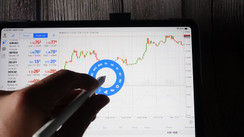The sole defense against what is now turning out to be the largest destruction of shareholder wealth since the global recession is a rising dollar.
Given that global equities already had lost $23 trillion in the year, the US dollar will be the only option until at least the end of 2022 because of its inverse connection with risky assets. The only safe haven is in dollar cash since the dollar is expected to keep increasing and because the overall economic climate continues to favor the US currency. It would require a severe downturn in the economy to considerably reduce US inflation, which would indicate a protracted decline in corporate earnings and stock prices before the Federal Reserve changes course.
Since the website's launch, FXTR has tracked the US dollar versus ten other currencies, proving that the dollar has increased by more than 11% this year. This week's currency markets have shown clear evidence of the chaos created by the rising dollar. The US dollar strengthened as faster-than-expected US inflation data on Tuesday prompted traders to increase Fed rate-hike expectations once more, dampening risk sentiment throughout the world.
The yen, which was already at a 24-year low, fell further, the Chinese yuan breached 7, and the Canadian dollar hit its lowest level in nearly two years. The Pound is reaching its lowest levels in 40 years, while the Australian dollar is about to set a new multi-year low.

According to strategists, there is hardly be any immediate reprieve from the dollar's hegemony. Fundamentally, not much has changed, and the dollar continues to benefit from the current global environment. The financial environment is overly lenient, and the actual policy ratio is still quite low. Although the market has factored some of this in, there is still enough uncertainty about the terminal's location to keep the USD well sustained. In the upcoming three months, the US dollar index, which is now at a 20 years high, will most likely increase by another 2%.





